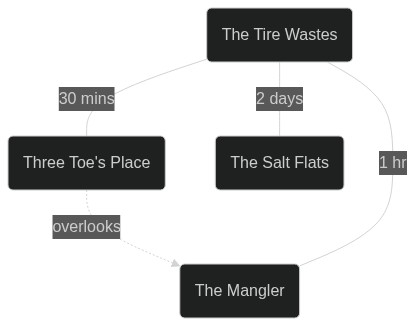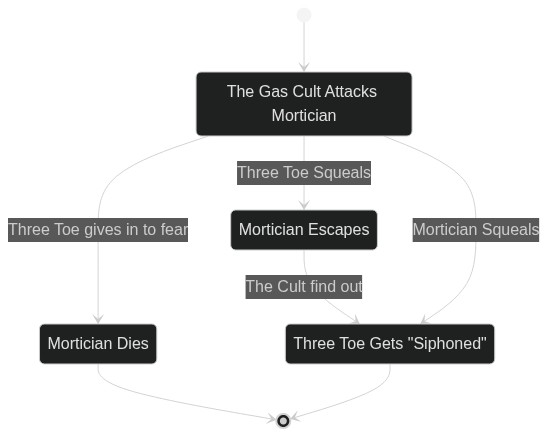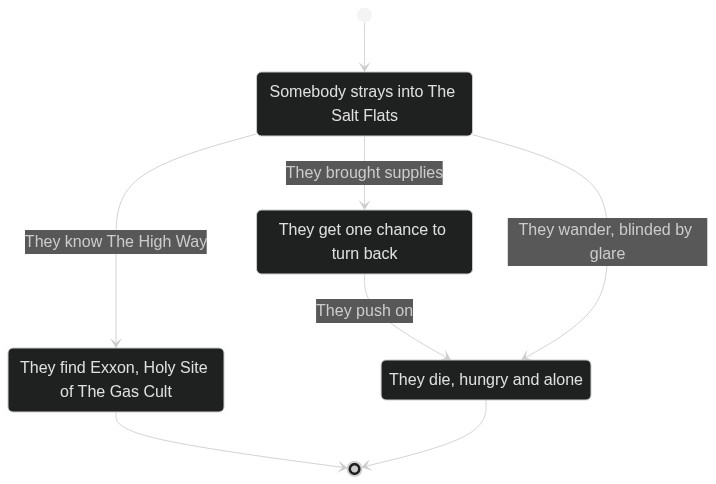-
In Dutch (the original language of Huizinga's eye-opening 'Homo Ludens') spel can be used to mean either,
Spel, play, as in the concept of play;
Spel, a game, as in a game you can play;
Spelen, to play, as in to play a game.
-
Last weekend, I had the profound pleasure of celebrating at a party with friends, people I have taught and like-minded people. We gathered around a bonfire and burned memories of the past and pains of the now to make space for tomorrow. It's a ritual that has been among us ever since humanity put words on burnable material. And I'm certain it's not going anywhere soon.
As those pieces of paper fell into the flames, something happened to the people around me. Their normal reserved mannerisms became loud and shameless. Some tears were shed, laughter erupted. Others danced at the mixture of red, white, and gold in the darkness. For a moment in time, it wasn't just the words that burned, but the actual memory written down left this world.
A magic circle was evoked.
And sitting in it, surrounded by people that I know have their own complex struggles and relationships with topics like power, freedom and self-expression, some things fell in place. I felt a sense of hope for many of the oppressed and ignored voices around me, as the topic of play and my insights in power structures layered over one another. Suddenly I understood what Huizinga meant when he wrote those very important words over a hundred years ago:
Play is free, is in fact freedom. – J. Huizinga
When we talk about play, we must first be aware that play is older than (precedes) culture. After all, animals play as well. And we can be rather certain that they didn't wait for us to build pyramids and draw our hands on cave walls before they started doing so. We can see animals do this. Simply watch two dogs hang out together and see how they start play-fighting one another. They bite, bark, jump and tumble. And if one of them crosses a line, by for example biting too hard, a loud bark happens, and the play time is over. This is a form of play that crosses even the boundaries of (supersedes) species. One can run up to a dog, look them in the eye, do some wagging motions, and before you know it you are both rolling around in the dirt. And just like between dogs if somebody crosses a line and communicates this clearly. The play comes to an end.
Essential to understand before we move on is to understand that when playing, the world outside of play vanishes. We surrender to the play, so to speak. You will notice this in a heated game. Concerns outside the rules become irrelevant. In a social deduction game (and many card games) lying becomes fine. Even when done straight to the face of your significant other. And where normally a fight where punches are exchanged would be reason for alarm, in play we laugh about it and compliment a good right hook to the jaw. This is also where its magic comes from. It lets us practice skills that we normally can't give time and attention. Lying is something you can get good at, but can't (shouldn't) use regularly, this goes double for a good session of punching one another. This is a good thing. Play lets us explore things. And in that process we may even develop whole new techniques and ideas that would otherwise have gone undiscovered.
There is, however, a clear separation we can make between the play that precedes culture (that animals do), and the one that came later (the human one). And it's that second, that I want to talk about with you on this day some people long ago named Tuesday.
See, as much as I like messing with dog owners by giving the dog they are walking in the street a daring glance and watching it become the most excited creature on the planet, there is not a lot we can meaningfully say about this type of play. It is in some ways like breathing, or eating, or any other of our primal functions. The creature has no say in the matter. It happens to them. Why? That is something I will leave up to the smart biologists and natural sciences of the world. All I can say about it is that the dog doesn't sit down, writes rules, picks a location and then plans a fun bit of play with their dog pals. (If you ever make a short story / film / comic about that, please reach out to me) No, animals play because they must.
But we humans have a choice.
There are core pillars underlying play. There are rules, which must be followed like an absolute law. These rules give clarity about location and duration, they mark clear edges to the play. It isn't real, and everyone in the play is aware of that fact. And for play to really work, this must be clear. To grab our dog example and move it from the first (primal) type of play to the second (planned) form of play. When two boxers agree to a fight inside the ring (why is it a ring when it's square?) they agree that a punch below the belt is a no-no, nor can they keep fighting outside the ring, it ends when the bell rings, and also, this isn't a “real” fight.
Let's zoom in on that last observation.
What makes this fight a 'non-real' fight? The fact that these people have no real desire to harm one another and take precautions to prevent actual harm to one another. But this has some problems. In the end, they are causing actual harm after all. With every punch the body feels pain, a wrong hook can cost a tooth (or more) and it's hard to say how much a K.O. will affect the future of the person hitting the ground. Still, we don't consider this fight to be real. And this largely has to do with the fact that they both consent that this fight will happen inside certain constraints.
But what happens with that 'non-real' fight if we introduce other factors. What if a player's performance during the fight might gain them a reward? A salary for a fight that was entertaining to a crowd? Or if a K.O. on their opponent allows them to feed their family? Does this make the fight less or more “real”?
Huizinga stipulates that play cannot have material ramifications precisely for this reason. It's easy to imagine that a player that is focused on getting a K.O. so they can prevent their kid from going hungry won't be able to fully absorb themselves into the play. The rules will become secondary to them. Where a jab on the chest may normally score them a point, it won't help them get closer to that K.O. they now need. This cracks the magic circle. The rules are no longer absolute, there are other rules in play.
This causes two tremendous problems.
One. If our boxers agreed to stop the match if one was in serious pain, but one of the two has a family to feed on the line, consent flies out of the window. One fighter keeps going even when their liver is sending stinging sensations through the body. They may be seriously injured, which is bad for the one being punched. But the other party may also end up having to live with consequences of this match that they never agreed on. Simply said, the whole situation has become a toxic mess.
Two. Our boxer now focused on getting that K.O. doesn't have the ability to vanish into the magic circle and dream away. They are no longer practicing the skills that belong to the sport. A duck and weave they would otherwise have tried, but is very risky, now gets a backseat to a jaw punch. Maybe some creative solution to winning the fight crosses their mind, but it won't be put into execution because there are more important matters at hand. Feeding their child.
Combined, these lead to a creatively dead and stagnant environment. See, our ability to play and power to create things are linked to one another. As said, play precedes cultures. Culture and creations are born from our playful nature. Every time we stack some objects on our desk for fun, we are creating the potential for a new insight regarding physics and building. The word jokes games you play with friends could one day form a poetic structure and spawn a whole genre of music. We are playful and creating beings at once. And if outside factors endanger our magic play circles, we lose a lot more than just the ability to have fun.
On a larger scale. If spaces are morphed and influenced in manners that prevent play, we lose our collective ability to mold and shape alternatives to the structures we live in. Put in a more poetic and playful manner. When we can't play, we lose our ability to test our dreams.
The magic fire circle.
The people around me on that Sunday evening engage in creative spaces for a living. Mostly in the game development world. And I know a lot of them are frustrated and sad. They feel caught in a web of complications where they can't make the games they believe the world needs to see. Not only because of corporate greed, but also because of the idea they have would actually create a financially healthy company. But the rules make it impossible for them to speak out, or to use language that doesn't fit inside the boxes designed for them. No matter how often the manager and bosses insist that they can say everything, the invisible rules outside the circles at the office prevent it from becoming a reality. In the end, only the powerful get to play, and their creations fill the world.
And that night we wrote down things from our past and present. Names of failed projects, angry rants at superiors, ills with society and as we spoke them out loud and tossed them in the flames a new magic circle was created. One where we could envision new tomorrows. Where our brains started playing with the ideas of what that could look like. Where we took the building blocks of the world around us and rearranged them into creations never seen. With tears, laughs, chuckles, chants and dance we shared this playful moment.
The power of it all was that we all agreed that we had to write our angers on one single piece of paper. Suddenly we were all confronted with ourselves. So many of our emotions are large, ungraspable, gigantic, things we can’t overcome. But after being handed a thick marker and a small sheet we had to look at it. And capture it. And once it was caught, we could all agree that by burning it, it would leave us forever. Things that were ruling our lives suddenly became beatable. By a simple flame and the act of our own hands.
In that little space of strict and simple rules. We upended all the unspoken rules of a society that held us back. We were, in fact, free.



